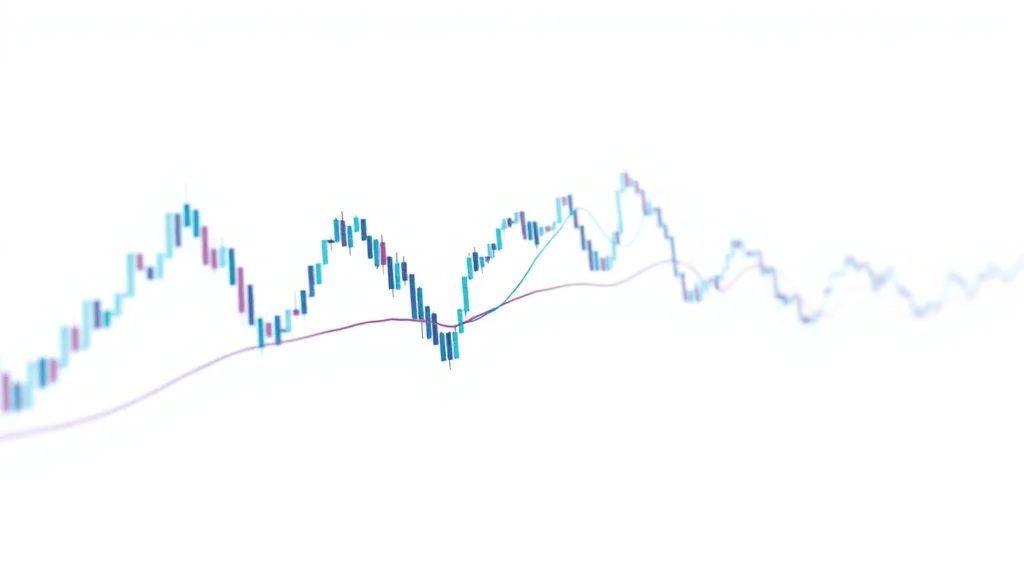Analyzing a stock is a vital skill for anyone looking to make informed investment decisions. Learning how to analyse a stock helps you evaluate a company’s financial health, market position, and future potential. By understanding stock analysis, you can minimize risks and identify opportunities in the stock market. Whether you’re a beginner or an experienced investor, mastering this process is essential for building a strong portfolio.
There are two main approaches to stock analysis: fundamental and technical. Fundamental analysis focuses on a company’s financial metrics, such as earnings, revenue, and debt. On the other hand, technical analysis examines price patterns, trends, and trading volume to predict future movements. Both methods have their strengths, and combining them often yields better results.
To effectively analyze a stock, it’s crucial to understand key metrics like the price-to-earnings (P/E) ratio, earnings per share (EPS), and free cash flow (FCF). Using tools like Yahoo Finance, Morningstar, and TradingView can streamline your research and provide valuable insights. By following a structured approach, you’ll gain the confidence to make well-informed decisions in a dynamic market. For more guidance, check resources like Investopedia and Morningstar.
Ready to learn how to analyze a stock? Let’s dive in!
Understanding the Basics of Stock Analysis
1. What is Stock Analysis?
Stock analysis is the process of evaluating a company’s financial and market performance to determine its potential as an investment. It helps investors make informed decisions by identifying strong opportunities and avoiding risky investments. This step is essential for anyone looking to understand how to analyze a stock effectively.
2. Types of Stock Analysis: Fundamental vs. Technical
Stock analysis can be divided into two primary approaches: fundamental and technical. Fundamental analysis focuses on a company’s financial health, including metrics like revenue, profits, and debt levels. It also considers external factors such as industry trends and macroeconomic conditions. In contrast, technical analysis uses historical price data and chart patterns to predict future stock movements. Both methods are valuable, and combining them can lead to better investment decisions.
3. Why Stock Analysis is Crucial for Investors
Stock analysis plays a vital role in minimizing risks and maximizing returns. By understanding a company’s performance and market behavior, investors can identify undervalued stocks or spot warning signs of potential losses. Knowing how to analyze a stock empowers investors to make strategic, data-driven decisions that align with their financial goals.
For more information on stock analysis, consider resources like Yahoo Finance or Morningstar. These platforms offer tools to help you dive deeper into fundamental and technical analysis techniques.

Key Metrics for Fundamental Stock Analysis
1. Price-to-Earnings (P/E) Ratio and Earnings Per Share (EPS)
The Price-to-Earnings (P/E) ratio is one of the most common tools investors use to determine if a stock is overvalued or undervalued. It compares the company’s stock price to its earnings per share (EPS). A low P/E ratio could indicate a stock is undervalued, while a high P/E might signal growth potential but at a higher cost.
EPS, on the other hand, measures a company’s profitability by dividing net income by the total number of outstanding shares. A higher EPS often reflects better profitability. Together, these metrics give investors insight into how a company’s performance relates to its stock price. To learn more about how to analyze a stock using these metrics, visit Investopedia’s guide on P/E ratios.
2. Debt-to-Equity Ratio and Free Cash Flow (FCF)
The Debt-to-Equity (D/E) ratio shows how much a company relies on borrowed funds compared to shareholder equity. A lower ratio indicates better financial health, as the company isn’t heavily dependent on debt. For instance, a D/E ratio under 1.0 is often considered favorable, depending on the industry.
Free Cash Flow (FCF) measures the cash a company generates after accounting for capital expenditures. FCF is crucial because it shows whether a company can fund operations, pay dividends, or expand without needing additional financing. Combining the D/E ratio with FCF helps you assess a company’s financial stability and ability to manage debt. Learn more about these metrics in detail at Morningstar.
3. Dividend Yield and Market Capitalization
Dividend Yield is a key metric for income-focused investors. It calculates the annual dividend payment as a percentage of the stock’s current price. A higher dividend yield can signal a steady income stream, but excessively high yields might indicate potential financial troubles.
Market capitalization (market cap) reflects the total value of a company’s outstanding shares. It categorizes companies into small-cap, mid-cap, and large-cap stocks. Understanding market cap helps investors gauge the company’s size, stability, and potential risk level. For further insights into dividend stocks and market cap, check out Yahoo Finance’s resources.
By mastering these key metrics, you can gain a solid foundation for how to analyze a stock. This understanding helps you make informed decisions, whether you’re a long-term investor or focused
Technical Analysis: Tools and Indicators
1. Reading Stock Charts and Patterns
Understanding how to read stock charts is essential when learning how to analyze a stock. Stock charts display price movements over time, providing key insights into trends and patterns. Candlestick charts are among the most popular types. They show the opening, closing, high, and low prices for a specific period. Each candlestick represents a single trading session and can reveal market sentiment, such as bullish or bearish trends. Line charts, on the other hand, connect closing prices to show the overall trend. Additionally, volume trends—represented by bars at the bottom of charts—indicate the strength or weakness of price movements. Higher volumes typically confirm strong trends. For a detailed guide, you can visit resources like Investopedia.
2. Understanding Moving Averages and RSI
Moving averages (MA) and the Relative Strength Index (RSI) are essential tools for stock analysis. A moving average smooths out price data over a specific period, helping you identify the stock’s direction. For example, a 50-day moving average shows the average price over the last 50 days. When the current price crosses above the moving average, it may signal a buying opportunity.
The RSI measures the speed and change of price movements. It ranges from 0 to 100 and helps identify overbought or oversold conditions. An RSI above 70 suggests the stock might be overbought, while below 30 indicates it could be oversold. These indicators work well together to predict potential reversals or confirm existing trends. To practice using these tools, platforms like TradingView offer interactive charts and technical indicators.
3. Using Bollinger Bands and Support/Resistance Levels
Bollinger Bands are a popular tool for analyzing volatility. They consist of three lines: a simple moving average (middle band) and two standard deviations above and below it (upper and lower bands). When prices approach the upper band, the stock may be overbought. Conversely, touching the lower band suggests oversold conditions. Bollinger Bands are particularly useful for identifying potential breakout points in a stock’s price.
Support and resistance levels are critical in technical analysis. A support level is a price point where a stock tends to stop falling and may rebound, while resistance is a point where the price often stops rising and reverses. These levels are vital for identifying entry and exit points. Tools like Yahoo Finance provide free access to charts with Bollinger Bands and support/resistance markers, making it easier for beginners to apply these concepts.
Mastering these tools is a crucial step in learning how to analyze a stock effectively. Combining insights from charts, moving averages, and Bollinger Bands helps create a well-rounded view of potential price movements.

Step-by-Step Guide to Analyzing a Stock
1. Research the Company and Its Industry
Start by examining the company’s financial reports. Look at the income statement, balance sheet, and cash flow statement to assess profitability and financial health. Understand the business model—what products or services does the company provide, and how do they generate revenue? Compare the company to its competitors within the same industry. This helps you gauge its market position and potential for growth. For example, analyzing industry leaders like Apple or Tesla can offer insights into the competitive landscape.
2. Use Tools and Platforms for Analysis
Leverage popular stock analysis tools to simplify the process. Platforms like Morningstar and Yahoo Finance provide detailed financial data and stock performance metrics. Use TradingView to access advanced charting tools and technical indicators. These resources help you analyze both fundamental and technical aspects of a stock. By combining data from these tools, you can make informed decisions on how to analyze a stock effectively.
3. Evaluate Historical Performance and Market Trends
Study the stock’s price history to understand its performance over time. Look for patterns in price movements and identify significant events that caused fluctuations. Assess broader market trends to see how the stock reacts to economic changes, such as interest rate hikes or recessions. For instance, during bull markets, stocks often rise, while bear markets tend to bring declines. Historical data is crucial for predicting future performance and identifying potential investment opportunities.
Understanding these steps will help you confidently navigate the process of how to analyze a stock. For further insights, consider using stock screeners or exploring financial education resources online.
Common Mistakes to Avoid in Stock Analysis
1. Relying Solely on One Type of Analysis
One common mistake when learning how to analyze a stock is focusing on just one type of analysis. Relying only on fundamental analysis may cause you to miss short-term trends and price signals. On the other hand, using technical analysis exclusively can overlook the long-term financial health of a company. Combining both approaches provides a balanced perspective. For example, use fundamental analysis to assess a company’s profitability and technical analysis to determine the best time to buy or sell. Learn more about stock analysis techniques here.
2. Ignoring Macro-Economic Trends
Another critical mistake is overlooking macro-economic factors. Interest rates, inflation, and global events can significantly impact stock prices. For instance, rising interest rates often hurt growth stocks, while inflation may reduce consumer spending, affecting retail companies. Always consider how external factors influence the industry you’re analyzing. By staying informed about economic news and trends, you can better predict potential risks or opportunities. Check this guide on understanding macroeconomic trends.
3. Overlooking the Importance of Diversification
Putting all your money into one stock or sector is a risky strategy. Diversification helps spread risk and reduce potential losses. For example, if one sector underperforms, gains from other investments may offset the losses. Many investors fail to diversify because they focus too heavily on a single industry or company they’re familiar with. To avoid this, consider creating a portfolio with a mix of stocks from different industries, market caps, and geographical regions. Explore diversification strategies here.
Understanding these mistakes and how to avoid them is essential for effective stock analysis. By combining methods, considering economic factors, and diversifying your portfolio, you can make more informed investment decisions.

Conclusion
Stock analysis is a vital skill for any investor, helping you make informed decisions and minimize risks. By consistently analyzing stocks, you can identify opportunities that align with your financial goals. Start with basic tools like Yahoo Finance or Morningstar, which simplify data interpretation for beginners. As you gain experience, explore advanced methods such as technical indicators and financial ratios. Remember, consistency is key. The more you practice, the better you’ll understand market trends and stock performance. For more insights on how to analyze a stock, visit trusted resources like Investopedia or seek expert advice to deepen your knowledge and refine your strategies.







Leave a Reply